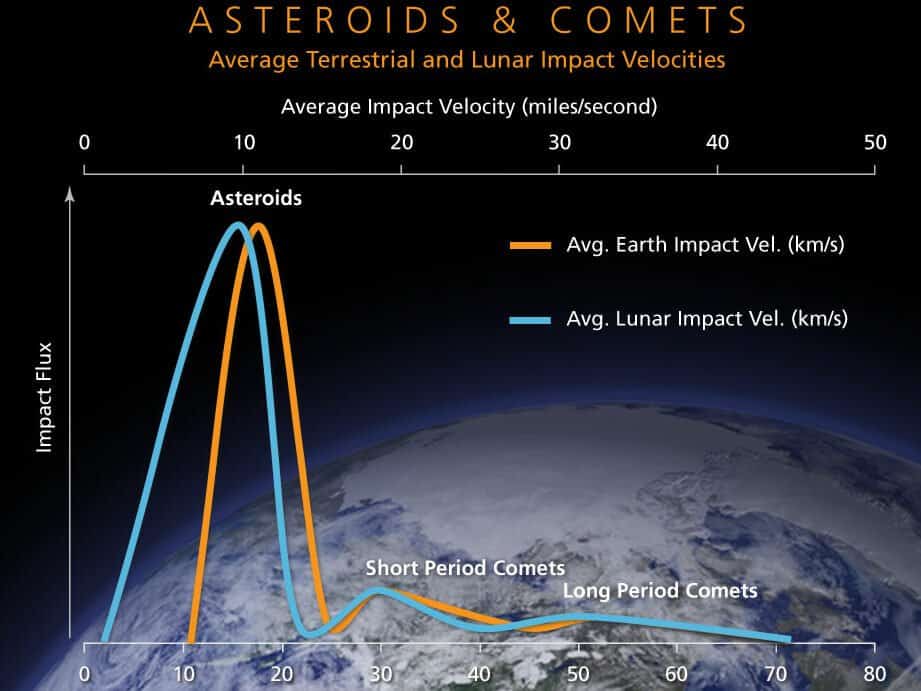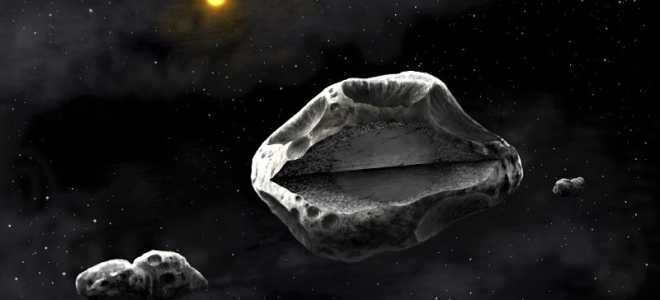
Today our topic of discussion revolves around the velocity of an asteroid, precisely its traversal through the immense expanse of our cosmos. As commonly known, these compact heavenly entities navigate around the Sun within a designated orbit, much akin to the planets. However, each possesses its own distinct movement pattern.
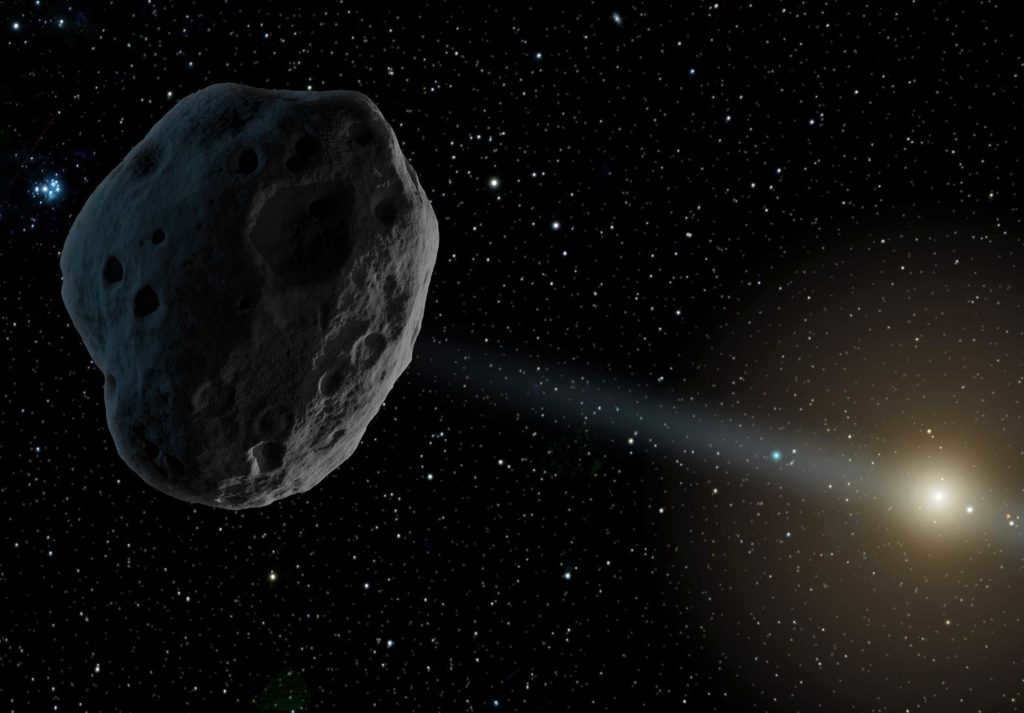
What is speed?
Essentially, speed is the measure of how fast an object is moving. Typically, to determine the value of speed, you need to divide the distance traveled by the time it takes to cover that distance.
Indeed, in the field of physics and astronomy, there are various types of speed. For instance, there is the concept of escape velocity. This is the minimum horizontal speed required for an object at a certain distance above a planet’s surface to enter a stable orbit around the planet.
It is worth mentioning that the escape velocity for the nearest orbit around Earth is 7.91 km/s. In general, scientists have been able to calculate the escape velocity of nearly every known asteroid.
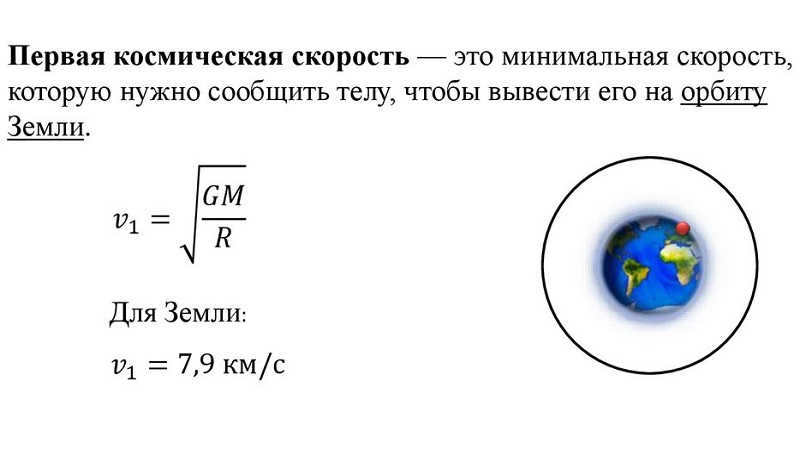
The movement of the majority of asteroids
When in outer space, an asteroid travels at an approximate velocity of 20 km/s. On average, it completes one orbit around the Sun every 3-9 years.
Naturally, the dynamics of the movement of individual asteroids can vary. However, it is always higher than the second cosmic velocity (11.2 km/s). At these values, the celestial body is able to overcome the gravitational pull of the planets.
In addition, asteroids also rotate on their axis. Typically, it takes around 7 hours for one complete revolution. This rotation is relatively slower compared to that of planets. This is because asteroidal objects are much smaller in size. Hence, the rotation itself takes less time.
The swiftness of movement of the most enormous asteroids
Let’s take a glimpse into the motion patterns of some colossal asteroids.
First and foremost, it is noteworthy to mention an asteroid, or more precisely a dwarf planet, named Ceres. It revolves at a staggering velocity of 17.882 km/s and completes one orbit around the Sun in approximately 4.6 years.
On the other hand, the orbital speed of the largest asteroid Vesta reaches an astonishing 19.346 km/s. Concurrently, its orbital period around the central star amounts to 3.628 years.
However, the remaining substantial asteroid Pallada flies through space at a velocity of 17.645 kilometers per second. Its complete revolution around the Sun is nearly identical to that of Ceres: it lasts approximately 4.618 years.
Hygeia, in turn, moves at an average speed of 16.753 km/s, and it takes her 5.562 years to complete one rotation around the Sun’s circumference.
Simultaneously, the Europa asteroid possesses a marginally higher index: 16.876 km/s. Consequently, the orbital period is slightly shorter, lasting 5,451 years.
Furthermore, the average velocity of Hector has been calculated to be 13.012 km/s, with a revolution around the Sun taking 11.989 years.
Obviously, these figures only pertain to the most renowned asteroid entities. In total, there are around 300,000 known asteroids, but it is not necessary to enumerate all of them.
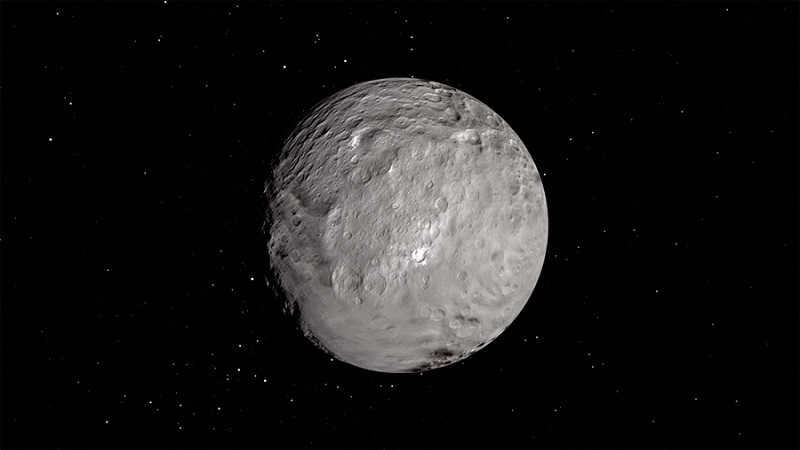
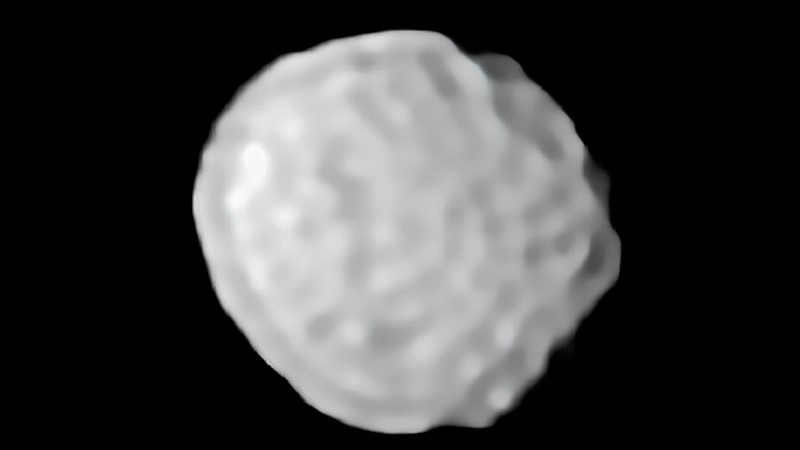
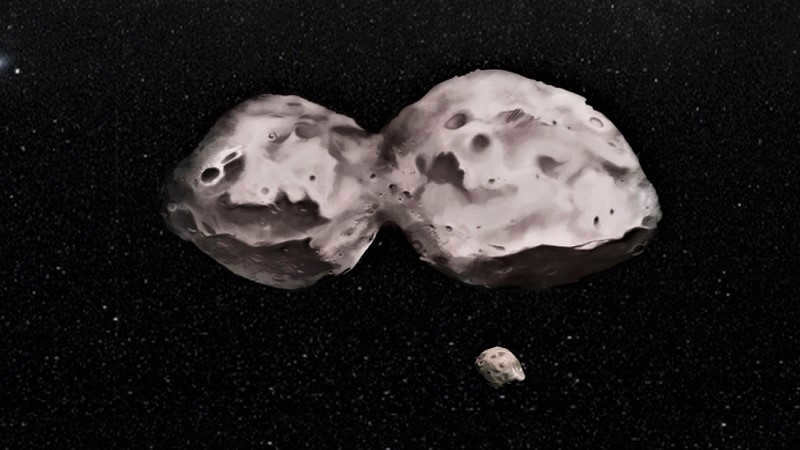



As previously stated, the speeds of the objects surpass the second space velocity and possess the necessary momentum to maintain orbits around planets. Scientists hypothesize that there could be undiscovered agile and swiftly moving entities traversing the cosmos at astonishing velocities.
In any event, asteroids navigate through space with great swiftness. Presumably, this is why they frequently collide with one another and with other celestial entities.
Meteors contribute significantly to the exploration of our universe. However, what information do we possess regarding these entities and the conversion of meteoroids into meteorites?
advertisement
Were you aware that Earth’s atmosphere can witness the passage of up to 25 million meteors every single day? As per the American Meteor Society, the velocity of an approaching meteor can vary from 25,000 to 160,000 miles per hour (40,200 to 257,500 kilometers per hour). Majority of these meteors, also known as shooting stars, consist of rocks the size of a grain of sand, which implies that they will never make it to the Earth’s surface as they will disintegrate in the atmosphere. Nonetheless, recent research suggests that approximately 5,200 metric tons of micrometeorites descend upon Earth annually.
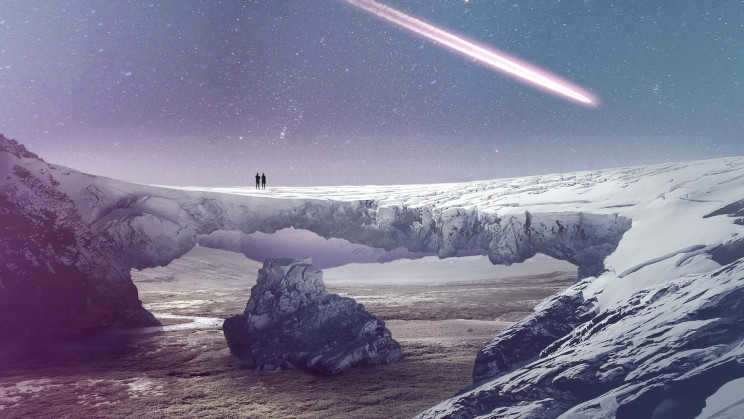
Image by Michael_Hiraeth from Pixabay
advertisement
Meteoroids are small rocks that orbit the Sun. Many of them are created when larger asteroids in the asteroid belt, located between Mars and Jupiter, collide with each other. These collisions cause pieces of the asteroids to break off, forming meteoroids. Sometimes, the force of the collision can cause meteoroids to be thrown off their usual orbit and sent on a path towards Earth.
Meteoroids can also include debris that is released by comets as they travel through space. This debris often travels together in the same orbit, creating what is known as a meteoroid swarm. There is also a small number of meteoroids that are fragments from the Moon and Mars, resulting from collisions with asteroids or other meteoroids.
Silicates and metals, such as nickel and iron, make up the majority of meteoroids. As a meteoroid travels through Earth’s atmosphere, the air surrounding it becomes compressed, resulting in increased temperatures due to air resistance.
advertisement
This rise in temperature causes both the surface of the meteoroid and the surrounding atmospheric gas to vaporize and become ionized, creating a dazzling glow. When viewed from the surface of Earth, this glowing streak appears to be moving and is commonly referred to as a shooting star or meteor. The majority of meteoroids that enter Earth’s atmosphere disintegrate before reaching the ground, making a meteor a phenomenon rather than an object itself. (A meteoroid is the actual object, and a meteor is the luminous trail it leaves behind. Wikipedia)
The process of vaporization, known as ablation, causes a meteoroid to lose mass due to the intense heat experienced during re-entry. Additionally, the aerodynamic pressure experienced during this process leads to the destruction of many meteoroids. As a result, only a limited quantity of space rocks are able to withstand the atmospheric effects and successfully make it to the Earth’s surface. These rocks are referred to as meteorites.
Categories of celestial objects
Meteoric celestial objects are not solely composed of rock; they can also contain various minerals such as iron, magnesium, nickel, and more. The composition of these celestial objects, as well as their velocity, determines the color of the light they emit. For instance, meteoric bodies with a high nickel content tend to display a green hue, while those with a significant amount of iron emit yellow light. The International Astronomical Union (IAU) has established the following classifications based on the size, brightness, and proximity to Earth.

Source: Artem Kniaz/Unsplash
Meteoroids of Extraordinary Brilliance
Enormous luminous meteoroids that outshine all the planets and possess a visual magnitude higher than -4 are referred to as fireballs. These meteoroids exhibit either a trail of smoke composed of non-luminous solid particles that disperse during ablation, or a plume of fire composed of ionized molecules. Fire plumes are most easily observed during the nighttime; however, smoke plumes can also be observed during daylight hours.
Advertisement
Plumes are typically seen at altitudes above 80 kilometers and are most commonly associated with fast-moving meteors. Smoke trails, on the other hand, tend to occur below this altitude.
Many fireballs go unnoticed as they travel over oceans or uninhabited areas, or are hidden by the daylight. Once the meteoroid reaches an altitude of 15 to 20 km (9 to 12 miles), its speed slows down to the point where the ablation process ceases and no more visible light is emitted, rendering the meteoroid virtually invisible. This phase is referred to as “dark flight.”
According to the American Meteorological Society, several thousand fire meteors enter Earth’s atmosphere every day. “Experienced astronomers can spot a fireball with a magnitude of -6 or higher once every 200 hours of observation, while a fireball with a magnitude of -4 will pass by them about once every 20 hours.”
Occasionally, there are instances when the stratosphere is illuminated by dazzling fireballs with a magnitude of -8 or higher, resulting in the creation of an acoustic shockwave. These phenomena are often referred to as bolides by astronomers.
advertisement
A Meteor That Makes Contact
Meteors that make contact are meteoroids that traverse the Earth’s atmosphere in a manner similar to a stone skipping across the surface of a pond before returning to space. As a meteor travels, it leaves behind a vibrant trail, and both its mass and speed are altered by ablation when it encounters dense layers of the atmosphere. Occasionally, small particles from these rocks reach the Earth’s surface and are discovered as meteorites.
The Great Daylight Fireball was a well-known angled meteor that passed through the Earth’s atmosphere on August 10, 1972, in the skies above the United States and Canada. It moved at a velocity of 15 kilometers per second and was so luminous that it could be seen during daylight hours.
Bolide
The term “bolide” is commonly used to describe the largest and most brilliant meteors, which typically have magnitudes greater than -14. However, there is no universally agreed upon definition for what constitutes a bolide. It is estimated that around 5,000 bolides enter the Earth’s atmosphere every year. These meteors often create sonic booms, and in some cases, particularly powerful bolides known as “superbolids,” they can generate significant shockwaves that pose a threat to life.
On February 15, 2013, an enormous explosion occurred above Chelyabinsk at a height of approximately 20 kilometers, resulting in the release of 500 kilotons of energy, equivalent to about thirty times the power of the atomic bomb dropped on Hiroshima. The resulting shock wave caused extensive damage over a distance of 120 kilometers, causing windows to shatter in hundreds of buildings and resulting in over 1,600 injuries, primarily from flying shards of broken glass. Approximately five tons of debris made it to the ground, including a meteorite weighing 650 kg that fell into Lake Chebarkul.
The Chelyabinsk meteorite ignited a discussion among scientists and government organizations regarding the necessity of a system to monitor potential space threats. In 2016, NASA established the Planetary Defense Coordination Office to track space objects that could pose a danger to life on Earth. Thankfully, no additional hazardous objects have been encountered since the incident in Chelyabinsk.
What exactly is a meteor shower?
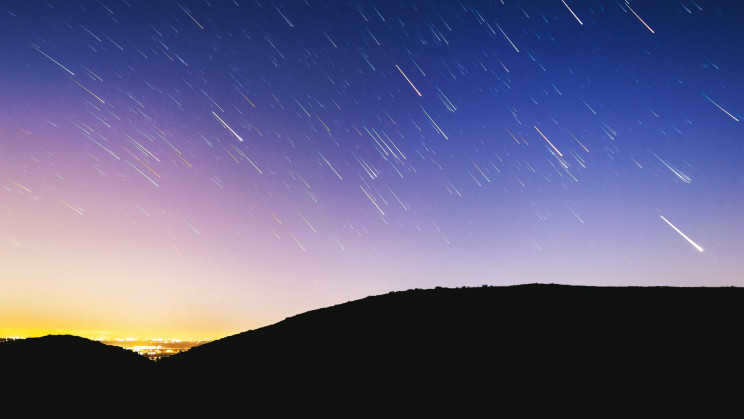
A meteor shower. Source: Austin Schmid/Unsplash
When a comet (a celestial object composed of ice and dust) passes near the Sun, the heat causes some of its materials to vaporize and create a “tail” made of gas and dust. Most comets follow highly elongated elliptical orbits. Consequently, certain comets follow paths that intersect with Earth’s orbit. When our planet crosses paths with the tail of a comet, it collides with the debris, resulting in a visible meteor shower.
Meteor showers associated with specific comets occur around the same time each year. The location from which the meteors of a meteor shower appear to radiate is known as the radiant.
Some individuals hold the belief that star constellations have a direct influence on meteor streams, as the name of the meteor shower includes the name of the constellation where the radiant is situated. However, this notion is actually unfounded. In reality, all meteor streams originate from comets.
For instance, the Orionids meteor shower was named after the constellation Orion, where its radiant is located. Nevertheless, its source can be traced back to debris from Halley’s Comet. Similarly, the Andromedid meteor shower, which has its radiant observed in the constellation Andromeda, is believed to have originated from comet Beulah.
Each time Earth passes through a comet’s tail, a meteor shower associated with that comet becomes visible in our sky. NASA, the Royal Observatory, and numerous other space agencies worldwide release meteor shower calendars annually, which allow individuals to stay informed about upcoming meteor showers.
There are meteor streams that are incredibly strong, generating countless shooting stars every hour. These extraordinary celestial events are known as meteor storms. One notable example is the Leonid meteor shower, which occurs every 33 years and is highly renowned. During this shower, it is possible to observe over 100,000 meteors per hour, making it a truly captivating sight.
Discover fascinating facts about meteors and meteorites
Meteors and meteorites contain minerals and elements that predate the formation of our solar system, making them a valuable resource for studying the universe. Here are some intriguing facts and research regarding these captivating celestial objects:
- The largest meteorite ever discovered is known as Goba and is located in Namibia. Comprised mostly of iron, it weighs over 60 tons and is estimated to have impacted Earth approximately 80,000 years ago.
- To properly identify and authenticate a meteorite, a 20-gram sample or 20% of the meteorite must be submitted to the Nomenclature Committee for inclusion in the International Meteorite Catalog.
- One potential approach for deterring a significant meteorite collision with our planet involves detonating a nuclear device in close proximity to the incoming object. The resulting radiation pulse would cause the meteor’s surface to vaporize, creating a thrust that could alter its trajectory. This technique is known as X-ray impact.
- According to NASA, there have been over 60,000 recorded instances of meteorites impacting Earth thus far, with a mere 126 of them originating from Mars. Martian meteorites hold considerable value and can be sold for prices exceeding $1,000 per gram, surpassing the worth of gold. Interestingly, it is even possible to find meteorites available for purchase on platforms such as eBay.
- The Allende meteorite, which fell in Mexico in 1969, is estimated to be 4.6 billion years old. Extensive research has been conducted on Allende and thus far, approximately one hundred fragments of the meteorite have been discovered. Scientists have determined that it consists of water, silicates, sulfates, and various other elements.
Due to the fact that water covers over 70 percent of the Earth’s surface, the majority of meteors that enter the atmosphere pass over oceans and uninhabited areas, ultimately landing in water, deserts, the Arctic, or Antarctica. As a result, we frequently miss out on the opportunity to witness these stunning natural phenomena, so take advantage of the next chance you get and don’t let it slip away.
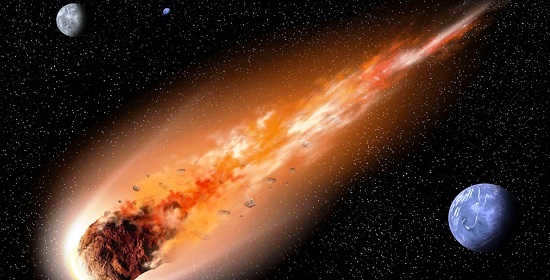
Throughout the ages, mankind has been fascinated by the enigmas of space, constantly striving to unravel their mysteries. Celestial objects such as satellites, stars, falling meteorites, asteroids, and comets have captivated and enticed humanity. When beholding these celestial bodies, we often either project upon them divine power or envision them as “shooting stars.” Some even believe that our destinies are intertwined with the movements of these celestial bodies. The potential destructiveness of meteorites is also a subject of concern. However, modern astronomy has debunked many of these myths. Today, we possess a much deeper understanding of the realities of planets, satellites, comets, and black holes.
Asteroids: Tiny Worlds in Our Solar System
Asteroids, similar to their astronomical counterparts, possess unique attributes and qualities. These celestial objects, known as asteroids, orbit the sun much like planets do. Planets are celestial bodies that encircle stars, such as our very own Sun, at specific distances and speeds. Earth itself rotates on its axis, resulting in the cycle of day and night. Moreover, planets are accompanied by satellites, such as the Moon orbiting around our planet.
Meteors and comets
Similar to planets and their satellites, numerous meteors and comets traverse the solar system. They consist mainly of inert materials formed from gases, metals, and rocks in outer space. Additionally, they can vary in size, ranging from small to weighing hundreds of thousands of tons.
On January 1, 1801, Italian astronomer Giuseppe Piazzi made the initial observation of such celestial bodies. At the time, Ceres was believed to be a colossal asteroid, but it was subsequently reclassified as a dwarf planet. Since then, over 10,000 asteroids and meteors of this kind have been identified. Many astronomers propose that a significant number of them orbit the Sun within a belt located between Mars and Jupiter. Ceres is the only dwarf planet within this belt. The distance from the Sun to this belt ranges between 32 and 49 million kilometers. However, meteors and asteroids can also be found outside of this belt.
Meteors are luminous particles of interplanetary material that fall from the sky. When they survive the journey through the Earth’s atmosphere and land on the planet’s surface, they are called meteorites. Meteors are commonly known as falling meteorites.
In 1961, the International Astronomical Organization classified and named these objects. They classified the independently moving bodies as meteors. However, these meteors vary in size. They are actually the remnants of burned up comets or planets. Sometimes, these meteors deviate from their usual path and enter the dense layers of the Earth’s atmosphere, reaching speeds of up to 30,000 kilometers per hour. Approximately 5 to 10 meteor strikes occur on Earth each year.
Is there a danger posed by falling celestial bodies?
When a meteor enters the Earth’s atmosphere, the pressure and friction cause it to burn up, resulting in what we commonly refer to as shooting stars.
In 2016, a meteorite fell in the Velluru district of Tamil Nadu, India, and tragically resulted in the death of a bus driver. This incident marks the first documented case of a space object causing a fatality.
Confirmed information states that in 1972, a cow in Venezuela was killed by a celestial body that struck it in the head. This meteorite, known as the “cow killer,” was later put up for auction in 2007. The only recorded human victim of a meteorite impact is Ann Hodges, an American who was hit by a meteorite in her home in Alabama on November 30, 1954, resulting in severe burns. One of the most well-known recent incidents involving a meteorite fall occurred in Chelyabinsk in 2013. Interestingly, meteorites have been falling to Earth for millions of years, long before the existence of our planet. During the early stages of Earth’s formation, meteorite impacts caused the planet to break into numerous fragments. Additionally, a meteorite impact is believed to be responsible for the extinction of the dinosaurs. Approximately 65 million years ago, a massive celestial body caused a significant amount of dust to spread in the atmosphere, blocking sunlight for decades and leading to the extinction of many animal species. However, it is important to note that out of every 5000 massive celestial bodies, only one is likely to strike the Earth. Nonetheless, such an impact could have a drastic effect on the planet’s geography, biodiversity, and climate. In fact, many of Earth’s major lakes were formed as a result of meteorite impacts. Meteor approaches and impacts can also disrupt radio waves. Notable meteorite strikes include the one in Peekskill, USA in 1999, where a celestial body weighing approximately 12.4 kg crashed into the Earth. In 2009, a meteorite crash in Bali, Indonesia created a 10-meter crater and released energy equivalent to 50 kilotons, twice the power of the Nagasaki atomic bomb. The study of meteorites has also contributed to our understanding of space and the science of time. Scientists analyze the composition of dust, rocks, and fragments from fallen celestial bodies to learn about the presence of different forms of matter and elements in outer space. The recent meteorite strike serves as a reminder for astronomers to remain vigilant and try to predict future events in order to take necessary safety precautions.
At this very moment, while you are absorbing this information, a colossal mass of stone, measuring nearly a kilometer in diameter, is hurtling towards our planet at an alarming velocity. The impact of such an astronomical entity with Earth is bound to result in a cataclysmic event. The inhabitants of our world are paralyzed with apprehension: will it bypass us? And in the event that it does not, is there a contingency plan in place for this calamity, or shall we all meet our demise?
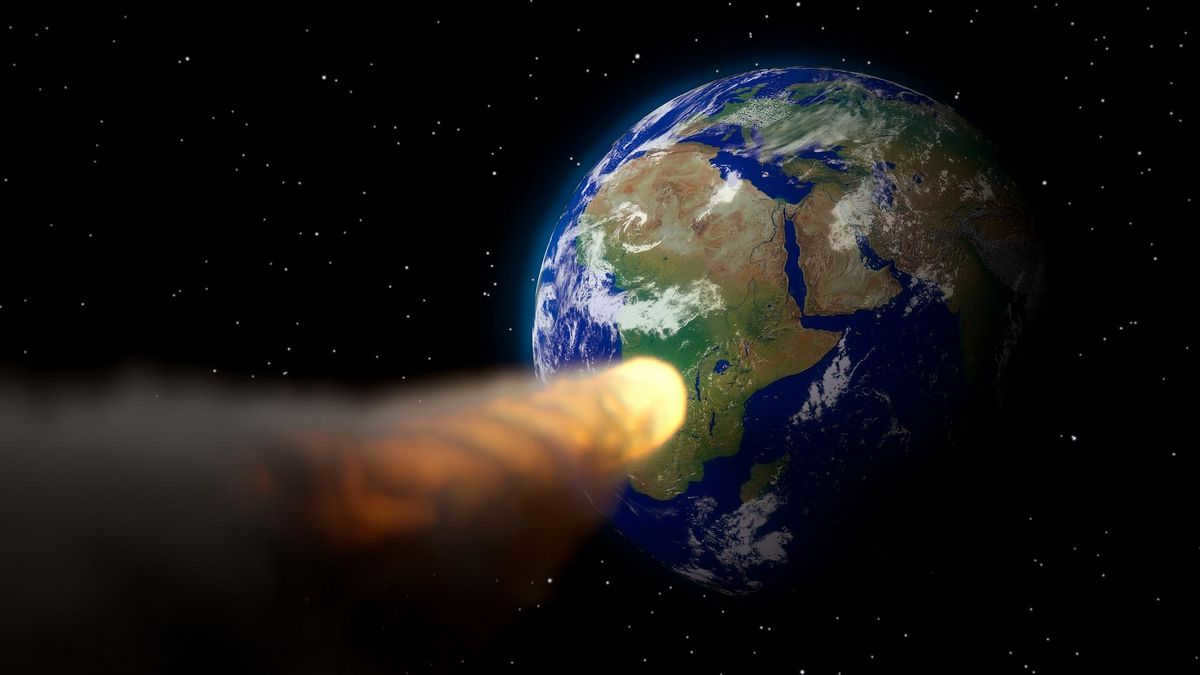
The global media often reports news about a potentially hazardous asteroid, the size of a skyscraper, that is expected to come dangerously close to our planet. Such reports have become a regular occurrence, and people have become accustomed to the fact that no catastrophic events occur in the end. Scientists provide reassurance, stating that the majority of asteroids have already been discovered and their orbits have been extensively studied, therefore posing no threat to Earth in the next thousand years. However, there are certain nuances to consider.
Asteroid 6037
There is another upcoming encounter with a familiar celestial object in just a matter of days. According to the experts at NASA, on August 23rd, the Earth’s orbit will intersect with asteroid 6037, which belongs to the Apollo group and was discovered back in 1988. This space object has a diameter of approximately 960 meters, making it relatively small, but it is considered to be potentially hazardous.
The scientists do not shy away from acknowledging the fact that if a celestial body of this size were to collide with the Earth’s surface, the consequences would be catastrophic for all life on our planet. However, we can take a sigh of relief for now, as the chances of such a scenario occurring are almost negligible. The asteroid will pass by at a distance of 6 million kilometers from Earth. Nevertheless, we will have to brace ourselves for a more alarming encounter at the end of February 2041, when the asteroid will come even closer, with a distance of just over 3.5 million kilometers separating it from our planet.
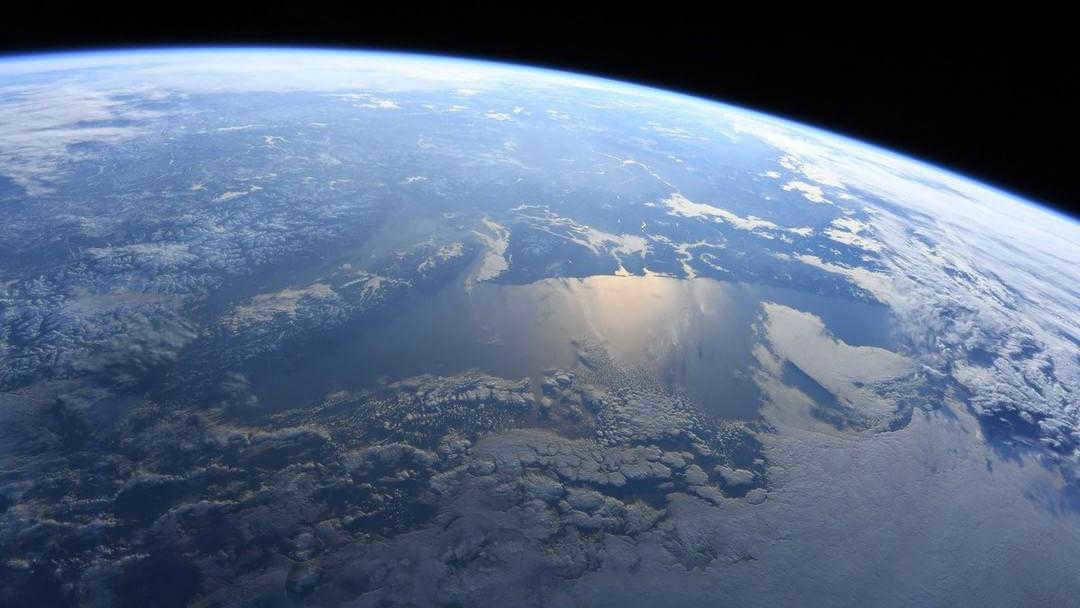
Nonetheless, in this scenario, astronomers and astrophysicists contend that the apocalypse is not imminent: the entire trajectory of asteroid 6037 has been calculated for the next century. Over this duration, it will intersect with the Earth at least six times, but each encounter will be too distant to pose any threat to our planet. Furthermore, on average, seven celestial bodies plummet to the Earth’s surface every year without causing significant harm, so it would be foolish to be fearful.
According to NASA specialists, the views of Russian scientists are in agreement with their own. Therefore, Sergey Naroenkov, a candidate of physical and mathematical sciences and a senior researcher at the Institute of Astronomy of the Russian Academy of Sciences, highlighted in a discussion with TASS that asteroid 6037 poses no threat since its orbit has been accurately calculated for a significant period of time.
Asteroids in Popular Culture
Despite the low probability of a catastrophic event, it is evident that the impact of such a collision would be devastating. The human instinctual fear of asteroids, comets, and other massive celestial bodies is often portrayed in mainstream media, particularly in the film industry.
For instance, a few years ago, the Hollywood sci-fi film “Don’t Look Up” featuring Meryl Streep and Leonardo DiCaprio was released. The plot revolves around a group of scientists who unexpectedly discover a dangerous asteroid that poses a threat to the entire planet and all life on it. However, the protagonists face a dilemma: no one is willing to believe them.
In the popular American-Canadian film of 2006 called “Earth Under Attack”, the storyline revolves around a fallen asteroid. However, instead of hitting Earth, it landed on the Moon. Nevertheless, this event set off a series of destructive processes on our planet. A team of scientists and special service personnel are tasked with saving humanity at all costs.
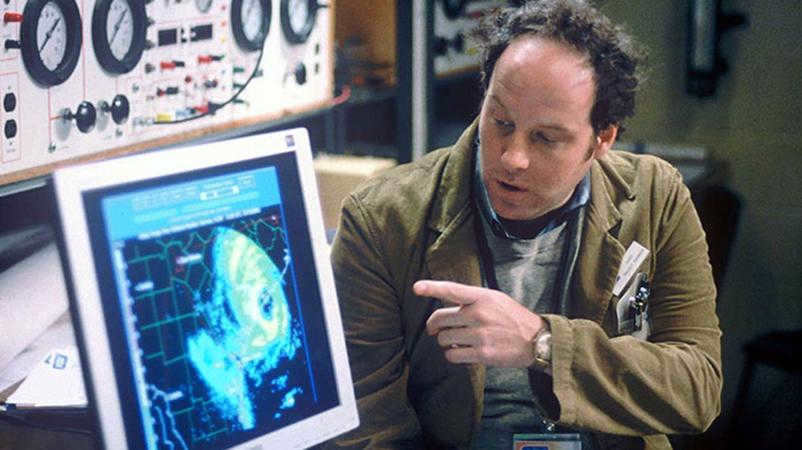
However, the most well-known film about the “meteor” topic is probably the American film “Armageddon”, which starred Bruce Willis, Ben Affleck, and Billy Bob Thornton. The plot revolves around a massive asteroid that is capable of causing mass extinction on Earth, approaching the planet in just 18 days. The only hope to stop it lies with a superhero named Harry Stamper, who sacrifices his own life to destroy the asteroid.
The dinosaurs were wiped out by an asteroid impact.
However, despite the massive budgets and impressive special effects of these blockbuster movies, they pale in comparison to the unimaginable events that have occurred on our planet. Research has revealed that during the early stages of Earth’s existence, it experienced numerous devastating asteroid impacts that scorched the surface.
Although there were only around ten such catastrophic events in the planet’s geological history, their aftermath was absolutely horrific.
As an instance, approximately 250 million years ago, there was a collision between a celestial object and the Earth. The impact was so forceful that it initiated the Permian extinction, which stands as the most significant extinction event in the planet’s history. Around 83% of insects and 73% of land-dwelling vertebrates perished, yet the fate of marine creatures was particularly tragic: 96% of species vanished forever.
About 66 million years ago, an asteroid collided with the Earth’s surface, generating an explosion akin to that of a dozen atomic bombs. This event resulted in a colossal wave, comparable to a tsunami, as well as extensive forest fires. Consequently, the atmosphere on Earth became saturated with sulfur vapors, which, according to certain hypotheses, caused global cooling and the extinction of the majority of dinosaurs.
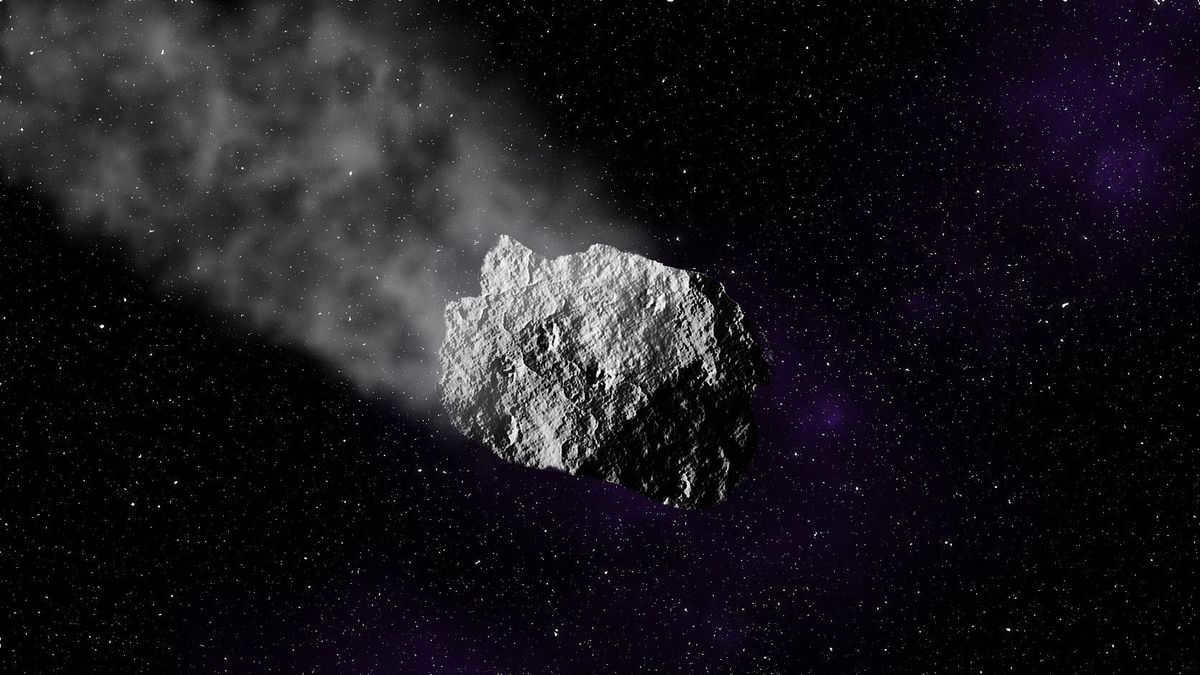
Around 34 million years ago, there was a simultaneous collision of two massive asteroids with our planet, with one of them impacting Siberia. This event had a devastating outcome, leading to the extinction of approximately 15 percent of all animal species on Earth.
Just imagine the incredible variety of life that would exist on our planet today, had these catastrophic events never occurred!
What’s happening today?
In recent times, asteroids appear to have become more subdued. However, there have been instances where these unrestrained celestial bodies have come dangerously close to Earth.
For instance, just last spring, an asteroid called FF1 from the Apollo group came within 30 times the usual distance to Earth – approximately 7.4 million kilometers. This was the closest approach of an asteroid to our planet since its discovery in 2007.
In November 2020, a space object whimsically named VT4 came so close to Earth that it even passed below the orbit of the International Space Station (ISS). Scientists were left speechless as they only noticed this uninvited guest after it had already flown away. This goes to show the challenges in studying all asteroids and accurately calculating their orbits, as well as underestimating their potential threat.
There have been numerous instances of such occurrences. So, in March 2015, humans were terrified by a massive asteroid known as YB35, which had been discovered a year prior. This substantial rock, with a diameter equivalent to five soccer fields, hurtled through space at an alarming speed, coming dangerously close to our planet – approximately 4.5 million kilometers away.
What exactly are asteroids, how many have been discovered, and which ones pose a real threat
Now is the time to delve into the realm of dry scientific facts and gain an understanding of what asteroids are and which ones pose the greatest danger to Earth.
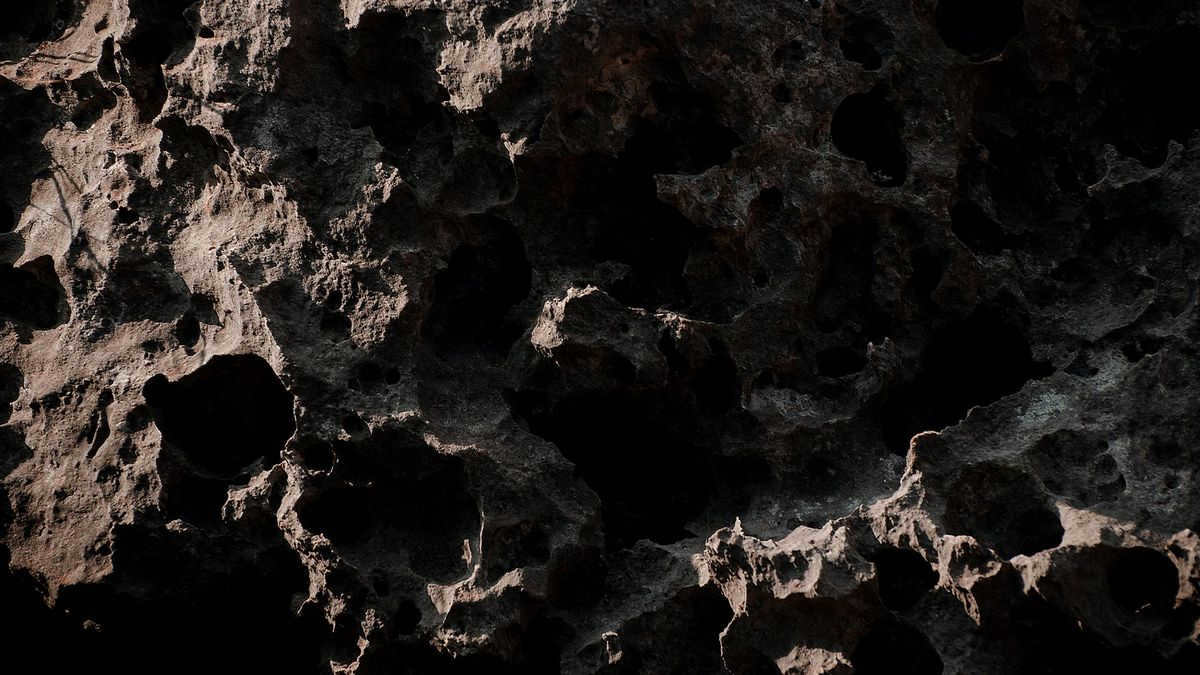
A meteorite is a small cosmic object that orbits the Sun, similar to planets. However, unlike planets, meteorites have an irregular, rocky, and rough surface, and they do not possess an atmosphere. Additionally, numerous meteorites have their own moons.
Near-Earth asteroids, which orbit the Sun in close proximity to Earth, are the primary focus of scientific interest. Currently, approximately 30,000 of these celestial bodies have been identified. Out of this total, only 2,000 are classified as potentially hazardous. This designation is reserved for asteroids with a diameter exceeding 140-150 meters, capable of coming within 7.5 million kilometers of Earth. Among these 2,000 asteroids, around 150 have a diameter of at least one kilometer.
It’s crucial to understand that the risk lies not just in the object’s size, but also in its proximity. When evaluating the potential threat, the distance between the asteroid and the Earth, as well as the distance between their orbits, are taken into consideration. This information was shared by Tatiana Galushina, the head of the laboratory of computer modeling and machine analysis of astronomical data at Tomsk State University, in an interview with TASS.
Discovering Asteroids: Who and How
While scientists strive to reassure the concerned public, it is important to acknowledge that there is still much unknown about asteroids. In fact, about 5 percent of these celestial bodies remain undiscovered, possibly lurking on the outskirts of our solar system.
That is why the search for and discovery of new asteroids continues to be a thrilling endeavor. Ground-based survey telescopes are constantly uncovering new asteroids, with discoveries happening almost every week. Once identified, larger and more specialized telescopes take over, allowing scientists to determine the trajectory, size, and even composition of these newfound celestial objects.
Following that, every discovered asteroid undergoes a meticulous and extensive examination in order to determine whether it poses a potential threat or not. It is worth noting that only after this celestial object is given an official serial number or even its own unique name, is it recorded in various catalogs. Prior to this, the asteroid is identified by a special alphanumeric code that encodes the year and month of its discovery.
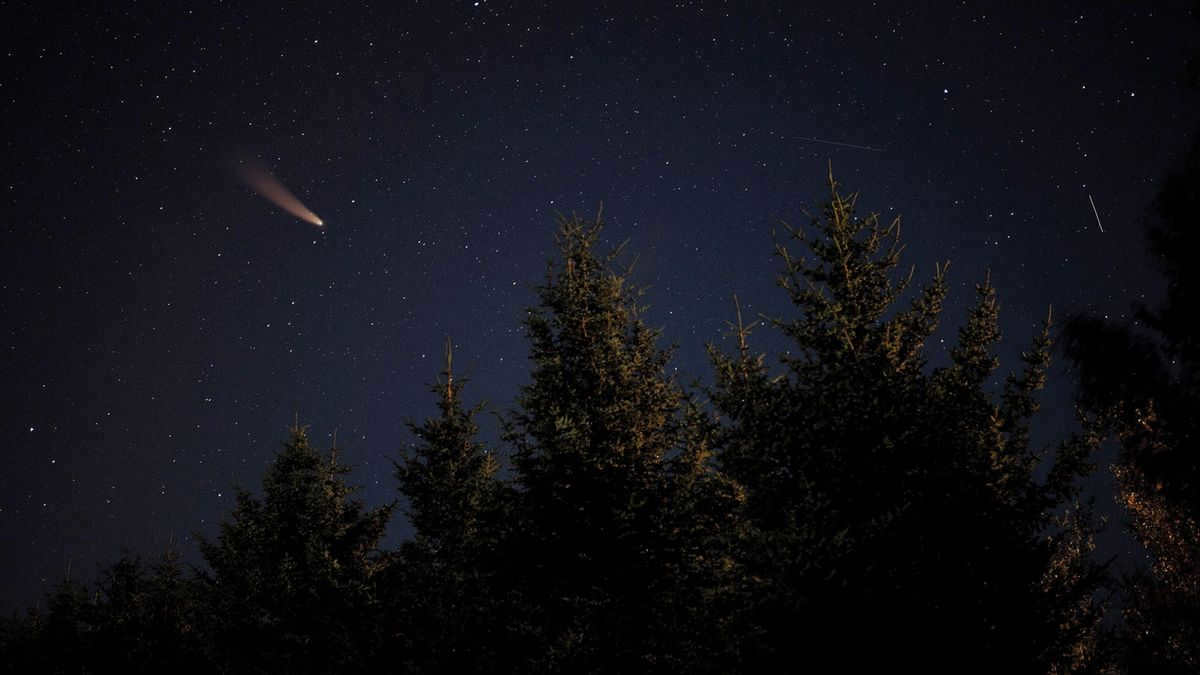
It is worth mentioning that the search for previously undiscovered asteroids captivates not only professional scientists, but also everyday individuals. The individual who discovered asteroid 6037, which will soon pass by our planet, was not a scientist, but a musician. Jeffrey Thomas Alu, an American, dedicated his life to music, but as a multi-talented individual, he also had a passion for photography, painting, and astronomy. In just a few years of working at the observatory, he successfully identified approximately 24 numbered asteroids and several near-Earth asteroids, as well as a couple of comets that were given his name.
What are the potential outcomes if a collision were to occur and how would humanity respond?
Researchers from the University of Colorado and the California Institute of Technology have unanimously stated that humanity is not at risk of asteroid-related catastrophes in the next 1000 years. They have determined that the likelihood of a collision between Earth and a kilometer-long celestial object is extremely low, occurring only once every 500,000 years. The chances of a collision with a 10-kilometer object are even rarer, happening only once every 100 million years. However, it is worth noting that the last such event occurred 66 million years ago, which is slightly concerning.
However, despite the confidence and expertise of astronomers and other specialists, it is universally acknowledged that no one can guarantee absolute safety. In the past, the collision with a celestial body resulted in the extinction of millions of dinosaurs, and in the future, a colossal asteroid could potentially deliver a devastating blow to our minuscule planet. Nevertheless, unlike dinosaurs, we are an advanced, intelligent, and technologically advanced civilization. Surely, humanity is prepared to defend against asteroids and establish a robust defense against extraterrestrial invasions. Or are we?
Regrettably, the reality is far from promising. This disheartening conclusion has been reached by NASA experts who conducted comprehensive research on this matter. These experts have acknowledged that even with six months’ notice of an impending collision, humanity would be powerless to prevent the catastrophe. The necessary technologies simply do not exist, and there is insufficient time to develop them.
The tragedy that could occur in the event of the fall of the fatal “block of stone” is beyond the limits of human imagination. It is impossible to fathom the complete devastation that would ensue, with entire countries and even continents disappearing, vast forests incinerating in a matter of seconds, and millions of lives lost.
Thanks to modern computer technologies, experts have been able to simulate the collision of a massive asteroid with the Earth. The Discovery Channel aired the awe-inspiring film “Miracle Planet – Large Asteroid Impact Simulation” in 2008, and its impact is still palpable today, leaving viewers breathless and their hearts racing.
The simulation provides a vivid depiction of a hypothetical scenario in which a massive asteroid, measuring 500 kilometers in diameter, collides with the Pacific Ocean:
- Immediately following the impact, a 10-kilometer layer of the Earth’s crust is peeled away.
- Simultaneously, a shockwave propagates across the planet at hypersonic velocity.
- Debris from the celestial object is expelled into Earth’s orbit and subsequently plummets back, causing widespread destruction to the Earth’s surface.
- A fiery tempest envelops the planet, obliterating all life in its path rather than merely killing it.
- Within a single day, the Earth’s surface becomes uninhabitable.
According to computer simulations, humanity is completely defenseless against asteroids. There are currently no spaceships capable of reaching an asteroid before it causes destruction, no weapons that could be utilized to eliminate the “extraterrestrial” threat, and we lack the technology to even alter the course of the celestial body. Furthermore, we do not possess a hero like Harry Stamper, who would willingly sacrifice himself for the greater good of our planet.
Given these circumstances, the only option available to world governments is to evacuate the population from the projected impact zone. However, based on the simulation footage, it seems that such efforts would be futile.
Therefore, our only hope is that we have at least 33 million years until the next encounter with a 10-kilometer asteroid. Approximately, of course.
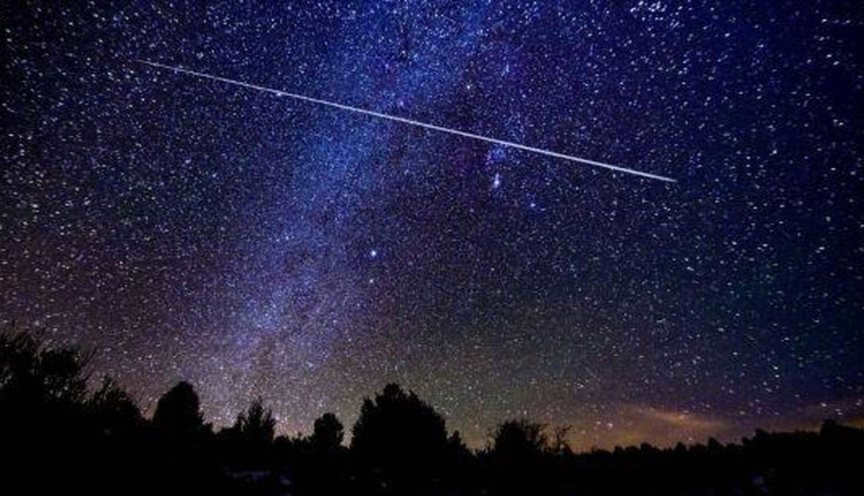
The distinction between a meteorite and a meteor – an overview with a picture
The night sky is full of enigmatic beauty, concealing numerous captivating secrets and riddles. It has an irresistible allure, captivating even those who are not well-versed in astronomy or astrology. Have you ever taken a moment to observe the stars or marvel at a lunar or solar eclipse? And surely, everyone has made a wish upon catching sight of a shooting star!
Meteor and meteorite: definitions and the distinction between them
When gazing up at the radiant expanse of stars above, it may appear that all the celestial bodies blend together seamlessly. In reality, there exist notable distinctions among these various entities. Are a meteor and a meteorite one and the same, or do they possess dissimilarities? Let us explore.
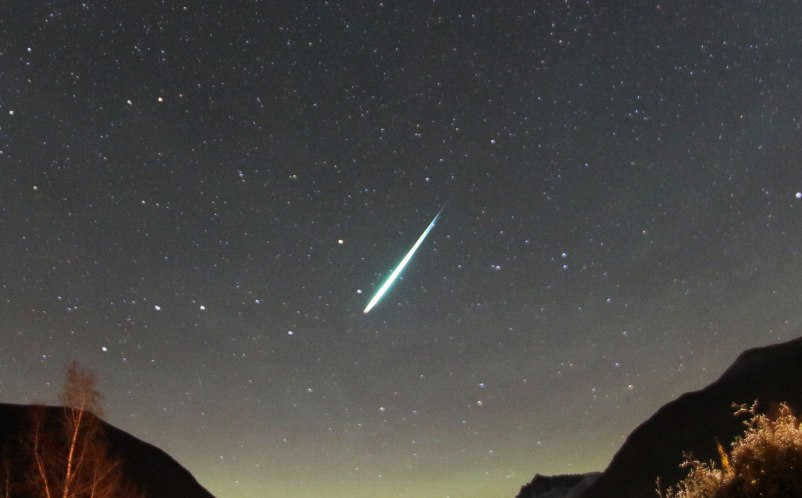
Image: meteor in the night sky
A Meteor is a luminous phenomenon that occurs in the Earth’s atmosphere. It happens when a particle or particles from a celestial body, such as a comet, enter the atmosphere at a high speed. The particles from the former comet are so small that they disintegrate due to friction before reaching the surface of our planet. From the ground, we observe this phenomenon as a brief flickering streak of light in the starry sky. It resembles a falling star against the backdrop of the night sky.
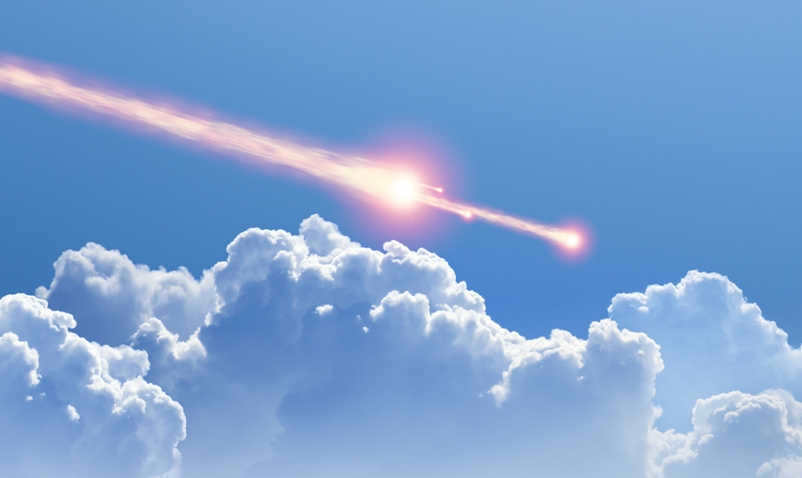
Image: A meteorite soaring through the clouds during the daytime
Meteorites are solid remnants of celestial bodies that make contact with the surface of Earth or other planets. Depending on their composition and size, meteorites can pose a threat. There are three recognized types of meteorites: stone, iron, and ironstone. The majority of meteorite falls consist of stone space bodies, accounting for 92.8% of all occurrences.
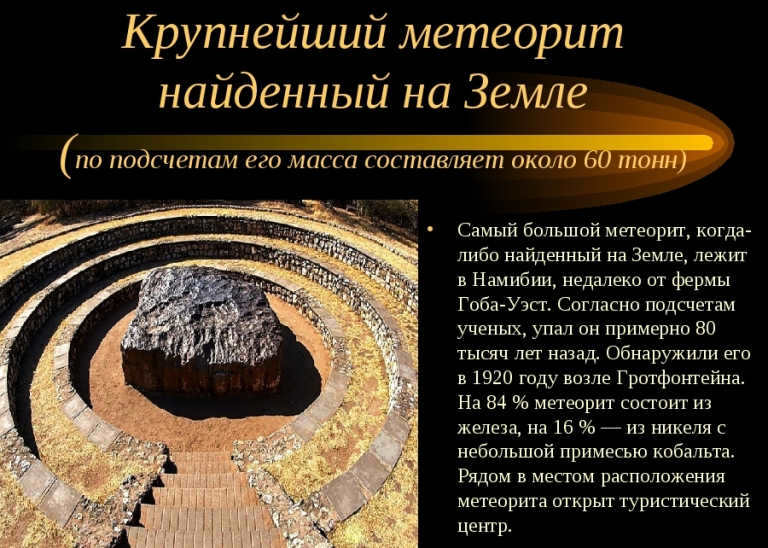
Image: The Goba meteorite in Namibia, Africa is the largest iron meteorite ever discovered.
While the majority of meteorites found on Earth weigh just a few grams, there are some larger specimens that weigh several kilograms to tens of tons. The Goba meteorite, for example, is estimated to have a mass of around 60 tons, making it the largest meteorite ever found. Scientists believe that our planet is bombarded by approximately 5-6 tons of meteorites every day, adding up to around two thousand tons per year.
What sets apart a meteor from a meteorite: weight distinction
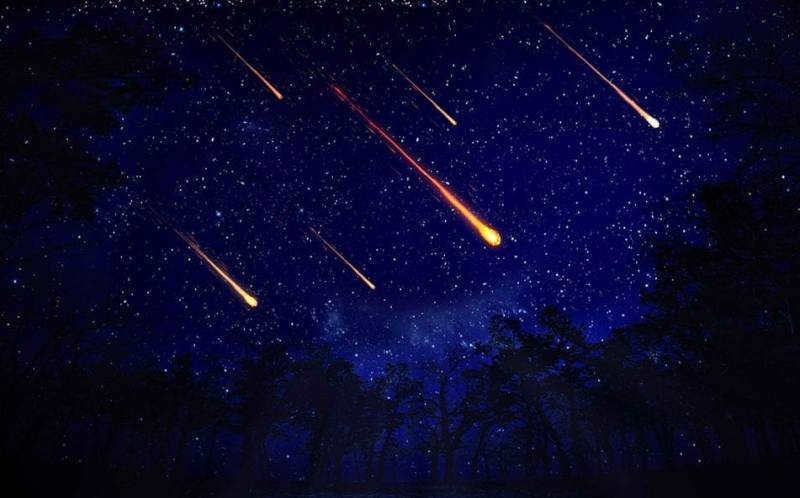
Image: A stunning scene of multiple meteors flying together in the beautiful night sky
Meteors, celestial objects that enter the Earth’s atmosphere, lose their mass almost instantaneously. Prior to burning up, a meteor’s mass can range from 0.0000000001 g to -10 g, meaning it can have a negative mass. Even if you were to add up the mass of all meteor particles that enter the Earth’s atmospheric layer, the total would still be minuscule compared to the planet’s mass.
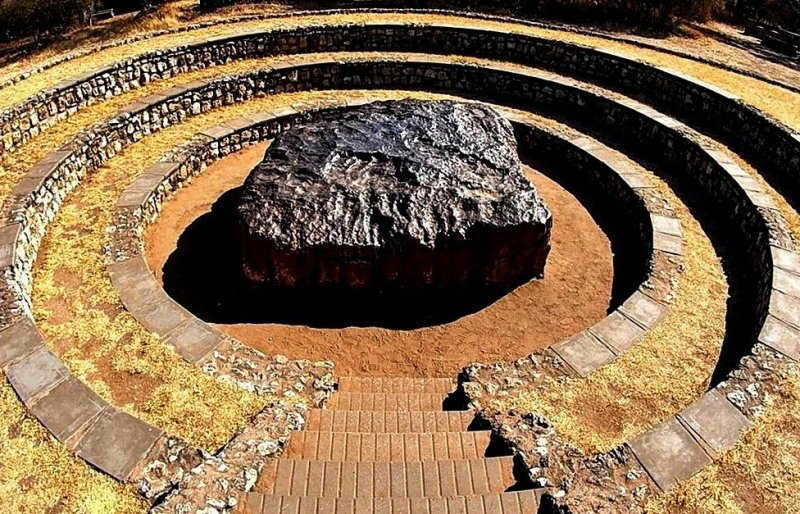
Image: The largest iron meteorite in the world, Goba, located in Namibia, Africa.
Celestial objects of significant mass descend to Earth in the form of meteorites. Goba, which was previously mentioned, was discovered in Namibia, Africa in 1920. Its estimated weight was sixty tons. However, this occurrence is extremely rare. The reason being that the high speed and pressure cause the meteorite to break apart while still in the atmosphere. Consequently, when such a body does descend, it typically results in a meteor shower.
The variation in the rate of autumn occurrence
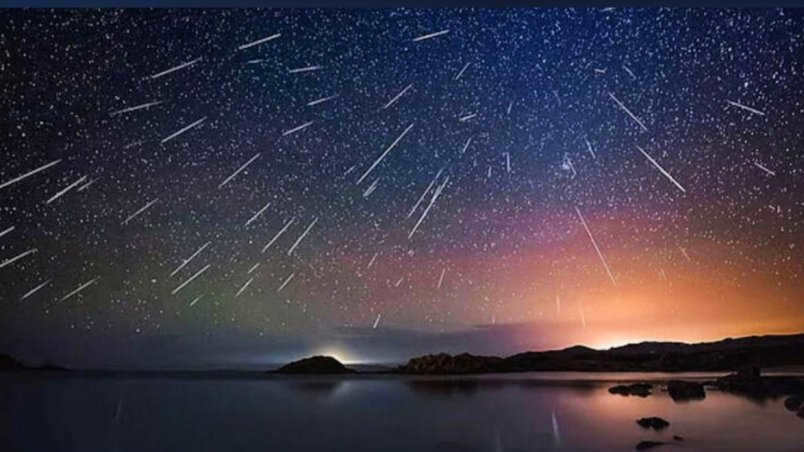
Image: meteors, meteor stream
The phenomenon of meteors appearing in the Earth’s atmosphere can occur tens of millions of times in a day. However, even with clear skies, only a few “falling” stars can be observed from the ground.
Several times a year, there are occasions when a much larger number of meteors can be seen. From our perspective on the ground, it may seem like tens of thousands of bright stars originate and “fall” from a single point. However, this illusion is created because the orbits of many celestial bodies, known as meteors, are parallel to each other. This phenomenon is commonly referred to as a “meteor shower” or “shooting stars”.
It cannot be claimed that meteorites arrive from space infrequently. In reality, they descend more frequently than we imagine, it’s just that only a few of these objects or their fragments reach the planet’s surface. The majority of them are destroyed (burnt) along the way. Nevertheless, several meteorites collide with the Earth’s surface on a daily basis.
They typically land in the taiga, desert, seas, and oceans, which is why they go unnoticed. Scientists have to work with limited resources – only 3-5 meteorites per year are accessible for research. And in total, scientists have only 1600 specimens of meteorites, with half of them being discovered almost immediately after impact.
Meteorites of significant size in the Russian Federation
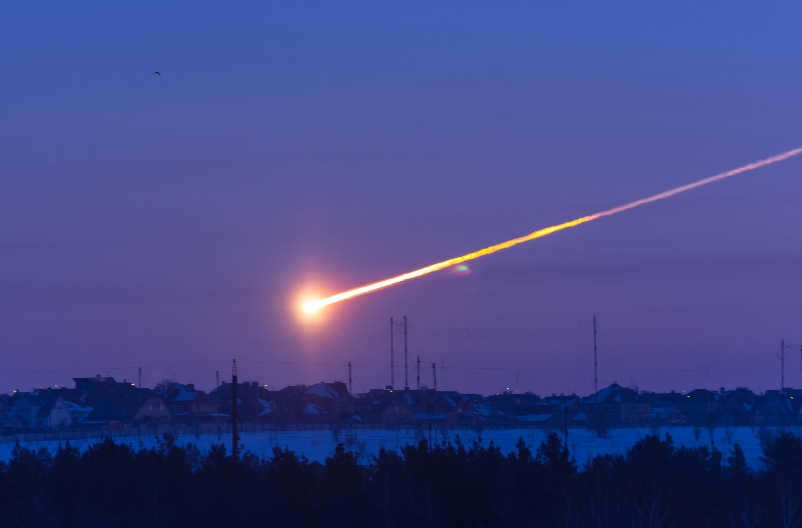
Picture: "Chelyabinsk meteorite" (Chelyabinsk, Russia)
The Laboratory of Meteoritics in the Russian Federation has reported that over the past 250 years, only 125 meteorites have been discovered within our country’s borders. Among the largest of these are:
- The Tunguska meteorite event (which impacted the Siberian taiga on June 30, 1908);
- The Tsaryov meteorite (which fell in December 1922 near the village of Tsaryov, now in the Volgograd region);
- The Sikhote-Alin iron meteorite weighing approximately 30 tons (which was found in the Ussuri taiga immediately after its fall on February 12, 1947);
- The Vitim meteorite-bolide crashed during the night of September 24-25, 2002 in the Irkutsk region, leaving behind fragments weighing several hundred kilograms. The bolide’s descent was accompanied by a spectacular display of light and sound.
- The Chelyabinsk meteorite made impact on February 15, 2013 near Chelyabinsk, traveling at extraordinary speeds through the Earth’s atmosphere. This high-speed entry caused a powerful shock wave, resulting in extensive damage to hundreds of buildings and industrial structures. Additionally, around one thousand Chelyabinsk residents were harmed by flying shards of shattered windows.
The potential dangers posed by meteors and meteorites
Spacecraft are at risk from microscopic particles originating from meteoric bodies. These particles can cause damage to the spacecraft’s plating upon collision. In more severe cases, larger meteor particles have the ability to disable a satellite, often resulting in electrical system malfunctions.
The danger of meteorites entering Earth’s atmosphere should not be underestimated. Not only do they create craters upon impact, but they can also have long-term effects on the climate, leading to irreversible changes. Scientific evidence has shown that the impact of particularly large “space guests” can even cause a shift in the Earth’s axis.

